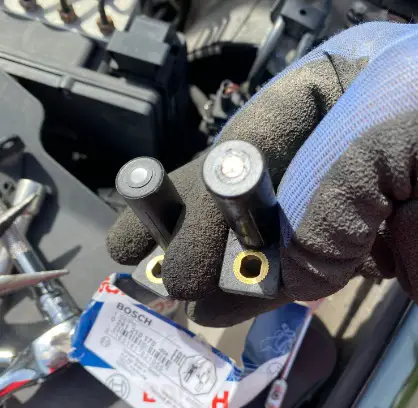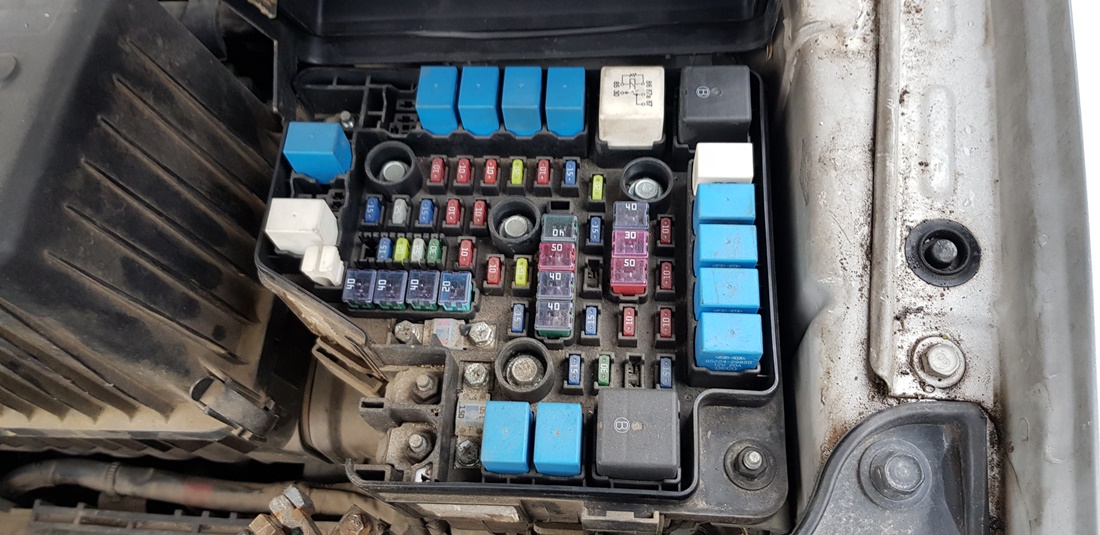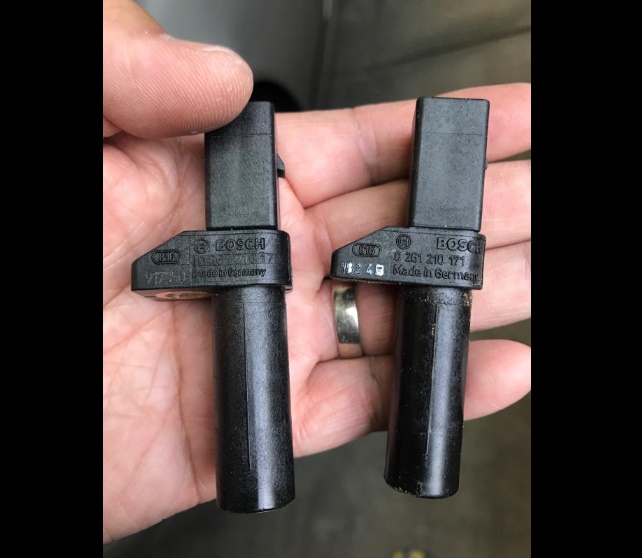Many car owners with alternators also own boats or RVs that use deep-cycle batteries. People often wonder if they can use the alternator on their car to charge these batteries as well.
In this blog post, we’ll answer that question and provide some helpful tips on how to correctly charge a deep-cycle battery using an alternator.
Key Takeaway
- Deep-cycle batteries are designed to hold a charge for extended periods of time.
- An alternator could charge a deep-cycle battery but it will take longer because the output of the alternator is 12V and the deep-cycle batteries are 24V.
- Jumper cables are not strong enough to charge a deep-cycle battery.
- You can charge a deep-cycle battery while in use as long as the battery receives more power than giving away.
- A high-quality deep-cycle battery can sit for up to two months without recharging.
What Are Deep-Cycle Batteries?

Deep-cycle batteries are lead-acid batteries designed to be regularly discharged and recharged. Unlike car batteries, which need only be discharged briefly, deep-cycle batteries can withstand long periods of discharging.
As such, they’re commonly used in applications requiring constant power sources like boats, RVs, golf carts, and solar panels.
Batteries are an integral component of many electronic devices, from cell phones to cars. Most batteries provide a short burst of power before needing to be recharged; however, there are some that are designed for long-term usage.
Deep-cycle batteries, also known as deep-cycle batteries, are commonly found in boats and RVs, and solar energy systems. Deep-cycle batteries work by slowly releasing their stored energy over an extended period of time which enables them to be used for extended periods without needing frequent recharging.
Furthermore, deep-cycle batteries tend not to experience the “memory effect,” which can reduce performance over time for other types of batteries. As such, deep-cycle batteries make for a great option in applications requiring extended usage.
Deep-cycle batteries come in many different varieties. Lead acid batteries are the most affordable and long-lasting choice, though they’re quite heavy to transport. Lithium-ion batteries are another popular alternative as they’re much lighter than lead acid batteries and therefore easier to handle during transport.
However, they are more expensive and have a shorter lifespan. Another alternative is the nickel-cadmium battery, which has similar physical characteristics to lithium-ion batteries in terms of weight and cost; however, it has a shorter lifespan and may be harder to recycle says Continental Battery.
Can a Car Alternator Charge a Deep-Cycle Battery?

A car alternator can charge a deep-cycle battery, but it is not the optimal method due to potential differences in charging requirements and rates between car batteries and deep-cycle batteries.
While a car alternator’s primary role is to maintain the charge of the vehicle’s starter battery and power the electrical systems, it can technically charge a deep-cycle battery.
However, there are significant differences between standard automotive batteries and deep-cycle batteries that make using a car alternator for this purpose less than ideal.
Deep-cycle batteries are designed to provide sustained power over a long period and can be deeply discharged repeatedly.
They require a slow and steady charging process that ensures the battery is properly filled and conditioned. On the other hand, car alternators are designed to deliver high currents for short periods to quickly recharge a car’s starter battery that doesn’t typically experience deep discharges.
Using a car alternator to charge a deep-cycle battery may result in improper charging, leading to reduced battery performance and lifespan. It’s always best to use a proper battery charger designed for deep-cycle batteries to ensure they are charged correctly and safely for optimal performance and longevity.
Can I Connect a Deep-cycle Battery Directly To The Alternator Without a Regulator?
Connecting a deep-cycle battery directly to the alternator without a regulator is not advisable as it can lead to overcharging and potential damage to the battery.
From my experience as a mechanic, I can tell you that an alternator, while it does generate the electrical power needed to charge a battery, doesn’t control the amount of current it sends to the battery. That’s where a voltage regulator comes in.
The regulator’s job is to ensure that the battery is charged at a safe and controlled rate, which protects the battery from damage and maximizes its lifespan.
Without a regulator, the alternator could potentially send too much current to the battery, leading to overcharging. This is especially true for deep-cycle batteries, which are designed for slow, steady charging and discharging cycles.
Overcharging can cause excessive heat, swelling of the battery, leakage, and in extreme cases, even an explosion. Furthermore, it can significantly reduce the lifespan of the battery by causing damage to the internal cells.
Can You Charge a Deep-Cycle Battery With Jumper Cables

Charging a deep-cycle battery with jumper cables is technically possible, but it’s not the most efficient or safest method due to the risk of overcharging and potential damage to the battery.
Jumper cables, often used for jump-starting vehicles when the battery is dead, can be used to charge a deep-cycle battery.
This process involves connecting the deep-cycle battery to a good battery in an engine that is running, allowing the alternator’s charging power to flow to the deep-cycle battery. However, this method comes with some significant drawbacks.
Deep-cycle batteries are designed for slow and steady charging, which helps maintain their longevity and performance. They should ideally not be charged over 10 amps. In contrast, a car alternator can deliver a much higher current, potentially leading to overcharging of the deep-cycle battery.
Overcharging can cause a variety of problems, including heat buildup, swelling, and in extreme cases, even explosion. Furthermore, it can significantly shorten the lifespan of the battery by damaging the cells and reducing its overall capacity.
Can You Charge a Deep-Cycle Battery While In Use?

A deep-cycle battery can be charged while in use, as long as the charging system can provide more current than the load is drawing.
In my experience as a mechanic, I’ve seen many setups where a deep-cycle battery is being charged while it’s powering a device or system. This is common in RVs, boats, and solar power systems where the battery is continually being used but also needs to stay charged.
However, it’s important to note that the charging system must be able to provide more current than what the load is drawing from the battery. If the load is greater than the charge, the battery will continue to discharge even while connected to the charger.
Also, it’s crucial to monitor the battery during this process. Overcharging or undercharging can harm the battery’s longevity and performance. Overcharging can lead to excessive heat, battery swelling, or even an explosion, while undercharging can lead to sulfation, reducing the battery’s capacity and lifespan.
How Long Can a Deep-Cycle Battery Sit Without Charging?

A deep-cycle battery can sit without charging for up to 30 days, but this duration largely depends on the size, type, and usage of the battery.
As a mechanic, I’ve often been asked how long a deep-cycle battery can remain unused without being charged. The answer is not straightforward due to the variables involved. However, based on expert opinions and my own experience, a deep-cycle battery can typically last up to 30 days without charging.
Keep in mind that this duration can vary greatly depending on several factors. The size and type of the battery play a crucial role – larger or higher quality batteries tend to hold their charge longer. The state of the battery when it was last used also matters. If it was fully charged and then disconnected from any loads, it would last longer than if it was partially drained.
Another important factor is the ambient temperature. Batteries self-discharge faster in warmer environments, so if stored in a cool, dry place, a deep-cycle battery can maintain its charge longer.
However, it’s important to note that regularly allowing a deep-cycle battery to sit without charging can lead to sulfation, which can decrease the battery’s capacity and lifespan. Therefore, it’s best to keep these batteries on a maintainer or trickle charger if they’re not going to be used for an extended period.
In conclusion, while a deep-cycle battery can sit without charging for a certain period, it’s always best to ensure it’s properly maintained to maximize its performance and lifespan.
FAQs
Q: How does the alternator charge a deep-cycle battery?
A: When the engine is running, the alternator generates electricity that is used to power the car’s electrical system and at the same time, charges the battery. The alternator produces alternating current (AC), which is converted to direct current (DC) by the rectifier in the alternator, and this DC current is used to charge the battery.
Q: Can I use a car alternator to charge a deep-cycle battery while the engine is off?
A: No, the alternator requires the engine to be running in order to generate electricity. It is not designed to charge the battery when the engine is off.
Q: Do I need to disconnect the battery from the car’s electrical system to charge it with the alternator?
A: No, you do not need to disconnect the battery from the car’s electrical system to charge it with the alternator. The alternator is designed to charge the battery while it is still connected to the car’s electrical system.
Q: Can I charge a deep cycle battery with a car alternator while the car is parked?
A: Yes, you can charge a deep cycle battery with a car alternator while the car is parked if you have a proper setup. You will need to use a battery isolator or a charge controller to prevent the battery from drawing power from the car’s electrical system.
Q: How long does it take for a car alternator to fully charge a deep cycle battery?
A: The time it takes for a car alternator to fully charge a deep cycle battery depends on several factors such as the capacity of the battery, the charging rate of the alternator, and the state of charge of the battery. On average, it may take several hours to overnight to fully charge a deep-cycle battery with a car alternator.
Q: Can I use a car alternator to charge multiple deep-cycle batteries in parallel?
A: Yes, you can use a car alternator to charge multiple deep-cycle batteries in parallel. However, you will need to ensure that the total battery capacity does not exceed the charging capacity of the alternator.
Q: What is the ideal charging voltage for a deep-cycle battery?
A: The ideal charging voltage for a deep-cycle battery is around 14.4 to 14.8 volts. This voltage range ensures that the battery is charged optimally without overcharging.
Q: Can a car alternator overcharge a deep-cycle battery?
A: Yes, a car alternator can overcharge a deep cycle battery if there is no voltage regulation in place. Overcharging can lead to the battery getting damaged and reduced lifespan. It is important to use a regulator or a charge controller to prevent overcharging.
Conclusion and final thoughts
In conclusion, while a car alternator is primarily designed to recharge the vehicle’s battery, it is possible for it to also charge a deep cycle battery.
This can be done by connecting the two batteries in parallel using proper precautions and equipment.
However, before attempting this, it is important to consider the specifications of both batteries and ensure that they are compatible.




